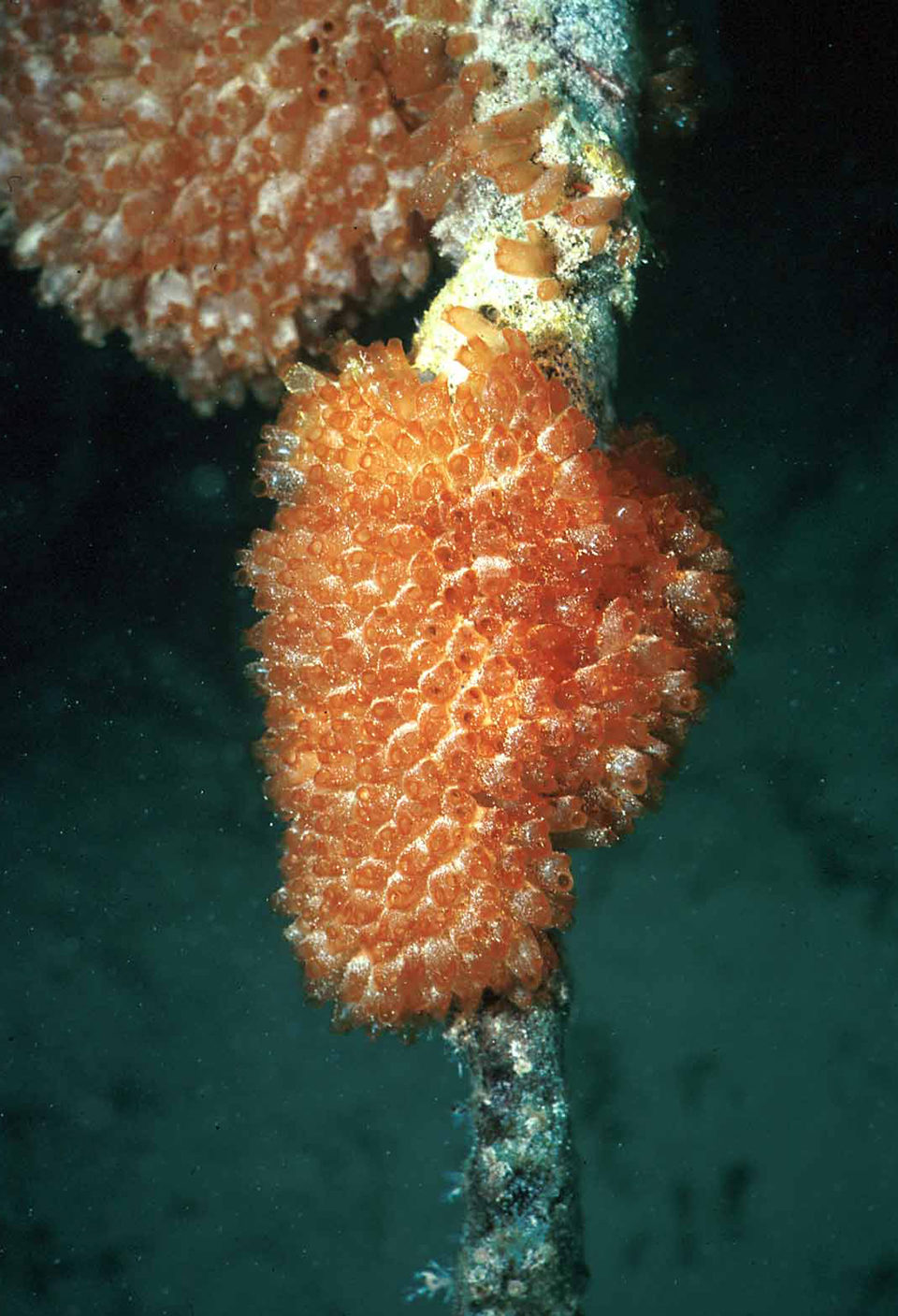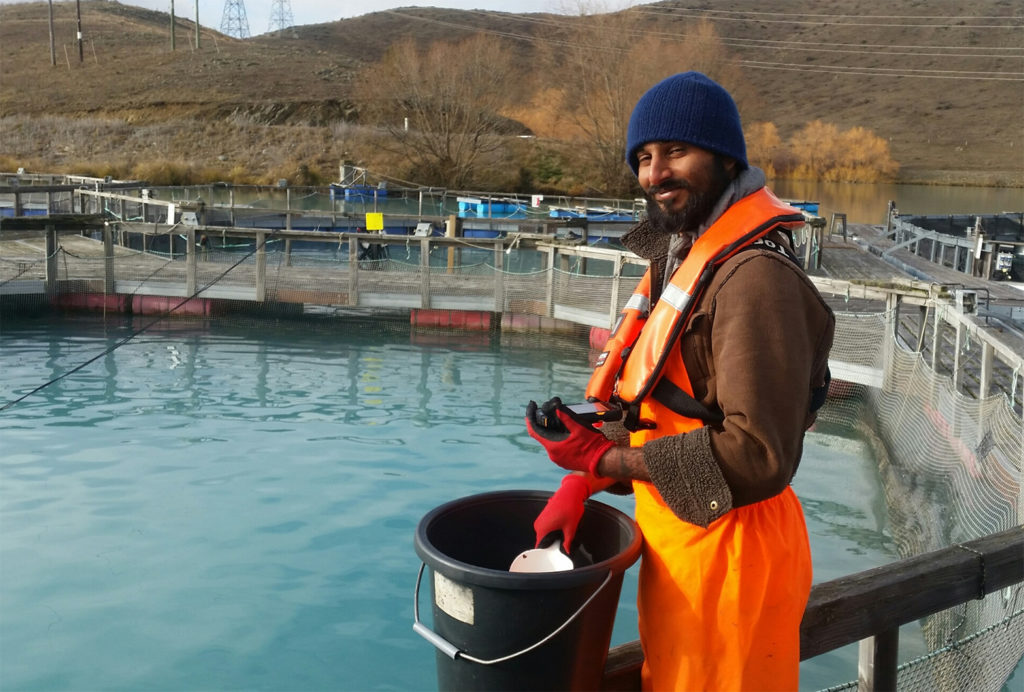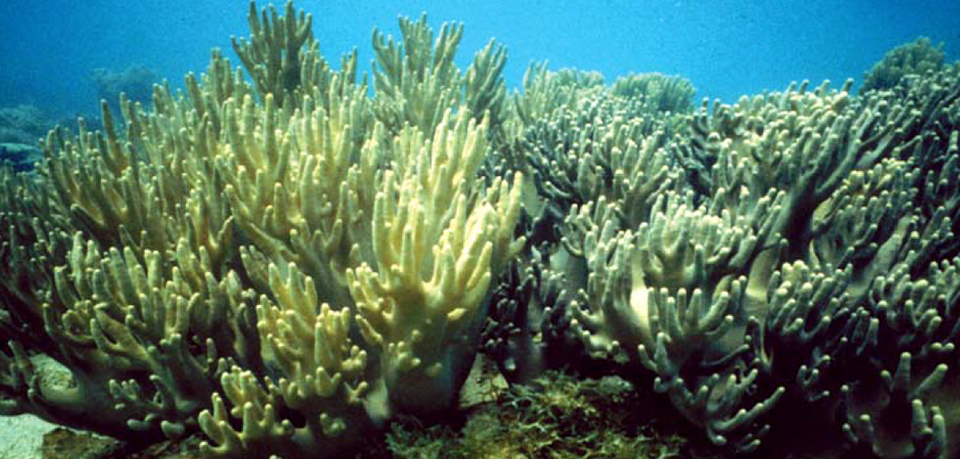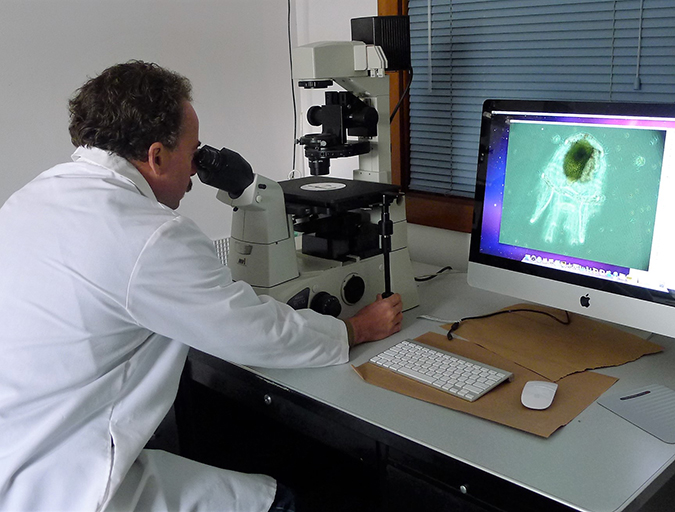Sponges, ascidians and bryozoans have biomedical potential

The marine environment is a rich source of unique compounds with pharmaceutical potential. Supply of most of these is a limiting factor in drug development. However, some sponges, bryozoan, and ascidians have already been successfully aquacultured, and opportunities exist for developing both the methods and markets for aquaculture products with biomedical potential.
The oceans are a rich source of biological diversity with more than a quarter-million described species of marine organisms. We do not know how many marine microbes exist in the oceans – it’s been estimated that less than 1 percent of the marine bacteria, fungi, and viruses have been identified.
This biological diversity has led to rich chemical diversity, especially in organisms that spend most of their lives on ocean bottoms and have evolved chemical strategies for communication, defense, and reproduction. In the past few decades, more than 14,000 unique chemicals have been identified from organisms such as sponges, soft corals, ascidians, mollusks, and microbes. More than a dozen of these are in advanced development for the treatment of cancer and other diseases.
Medicinal, cosmetic products
One of the more promising marine natural products is Yondelis, an anticancer drug in development by PharmaMar, S.A., that is derived from the sea squirt (Ecteinascidia turbinata). Another example is the anticancer compound discodermolide, identified by scientists at Harbor Branch Ocean-ographic Institution from the deep water sponge (Discodermia). Licensed to Novartis Pharmaceutical Corp., discodermolide is in human clinical trials. Its mechanism of action is similar to the cancer drug Taxol.
Other marine-derived chemicals are already commercially available as biomedical research probes, cosmetic additives, nutritional supplements, enzymes, and pigments. For example, the sea fan (Pseudopterogorgia elisabethae) is the source of a series of potent anti-inflammatory compounds, the pseudopterosins. Although not yet developed as pharmaceuticals, extracts of P. elisabethae are incorporated into more than 35 cosmetic products, including the Estee Lauder Resilience line of cosmetics.
Supply development
Development of supply is one of the most important aspects of the drug discovery and development process. An adequate supply of each chemical is necessary from the early stages – from identifying the molecular structure of the compound and determining its mechanism of action through preclinical and clinical evaluation of the drug.
Supply of most marine-derived compounds is often a limiting factor for pharmaceutical development. If a drug company is not reasonably sure it can obtain adequate supplies for clinical development and eventual marketing, it will be nearly impossible to license the drug for development. Unless there is a feasible alternative to harvesting, promising chemicals will remain undeveloped.
Some options for sustainable production of marine-derived bioproducts include chemical synthesis, controlled harvesting, aquaculture, in vitro production through cell culture and transgenic or recombinant production. Each of these options has advantages and limitations. Not all methods are applicable to every marine bioproduct and most are still in development.
Aquaculture methods
Both sea- and land-based closed-system aquaculture methods have been developed for the production of bioactive compounds from shallow-water marine invertebrates such as sponges, ascidians and bryozoans. Currently, supply of Yondelis is provided by aquaculture of E. turbinata in several locations in the Mediterranean.
The successful transplantation and culture of a biomedically important deep-water sponge in shallow-water lantern arrays by Battershill and colleagues in New Zealand suggested that aquaculture of some deep-water sponges is feasible. However, species from deeper water may have more critical growth requirements, such as high pressure and low temperature.
In-sea aquaculture is a cost-effective method of production with opportunities for technology transfer and economic development in the source country. However, it may not afford the opportunity for complete control of environmental parameters or production. Development of closed-system bioreactors for the aqua-culture of both shallow-water and deep-water organisms is a particularly challenging engineering opportunity.
The author’s laboratory at Harbor Branch Oceanographic Institution has pioneered the development of marine invertebrate cell culture for the production of bioactive compounds. Although not yet feasible for scale-up, this method could be combined with others for enhanced production. For example, seed cultures of sponges could be started in vitro, with the aggregates or “primmorphs” attached to tanks or other structures for grow-out.
Role of aquaculture
Is there a role for aquaculture in the further discovery and development of marine-derived drugs? Absolutely. A number of exciting opportunities exist:
- Biomass can be supplied for early-phase drug development.
- By improving the yield of bioactive compounds in aquacultured organisms, cost-effective production methods can be developed for industrial scale-up.
- Where markets prefer “natural” versus “synthetic” products, biological production methods, including aqua-culture, are the method of choice for supply.
- The application of mechanical, environmental, or biological stresses could stimulate the production of novel compounds in aquaculture.
(Editor’s Note: This article was originally published in the December 2004 print edition of the Global Aquaculture Advocate.)
Now that you've reached the end of the article ...
… please consider supporting GSA’s mission to advance responsible seafood practices through education, advocacy and third-party assurances. The Advocate aims to document the evolution of responsible seafood practices and share the expansive knowledge of our vast network of contributors.
By becoming a Global Seafood Alliance member, you’re ensuring that all of the pre-competitive work we do through member benefits, resources and events can continue. Individual membership costs just $50 a year.
Not a GSA member? Join us.
Author
-
Shirley A. Pomponi, Ph.D.
Harbor Branch Oceanographic Institution
5600 U.S. 1 North
Fort Pierce, Florida 34946 USA[117,100,101,46,105,111,98,104,64,105,110,111,112,109,111,112]
Tagged With
Related Posts

Innovation & Investment
Aquaculture data-collection app provides cloud coverage
Aquanetix, launched by two fish biologists, employs cloud technology for electronic data collection, enabling farmers to monitor infrastructure, minimize feed losses and make informed operational business decisions based on real-time reports about their stocks.

Intelligence
Hybrid soft corals could produce novel pharmaceuticals
Hybrid soft corals Sinularia maxima and S. polydactyla contain numerous compounds that have potential for important pharmaceutical activities.

Innovation & Investment
Better together: Partnerships drive innovation at leading labs
Laboratories with industry partnerships are making aquaculture more innovative, efficient and responsible. These collaborations offer access to expertise, facilities and funding to further the industry and improve global food security.

Intelligence
On GM foods, part 4: Let’s examine our needs
Scott Nichols concludes his four-part series about GM foods with a simple question about transgenic animals: Are they truly meeting a need? We need more food and we need better nutrition. Both desires should be achieved without increasing environmental impacts.


